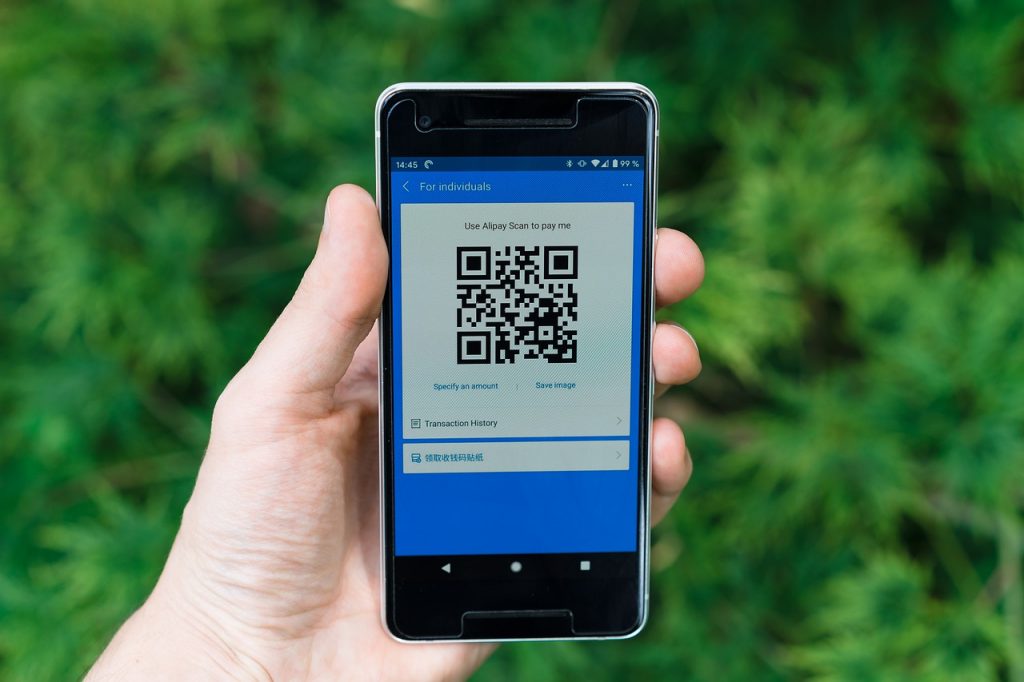QR Codes & COVID: How the Technology Benefits Your Workplace
What is QR code technology? QR code in its most basic form — before any sort of deployment system has been rolled out — is an information scanning technology. QR stands for “quick response”. The idea behind the technology is that a unique barcode-like image is formed within a rectangular space. A QR reader takes this image and quickly deciphers it (almost instantly) pulling up any information it has stored in its database relating to that unique code.

Based on the code it reads, the QR technology will perform an assigned action.
Now, this is where QR gets a bit more complex. The QR reader is a technology that can be integrated with just about anything, which means that the actions it can perform are almost limitless.
For example, during the coronavirus crisis, the British NHS developed a mobile application for tracking COVID-19 cases using a QR reader mobile application. Each public location — a café, pub, restaurant, etc — has a unique QR code identifier. When a person enters a space, they scan the code with their mobile QR reader app. The reader identifies the location using the QR code and logs the user’s presence. The NHS can then track the movements of infected individuals and inform people through the app if they’ve come into contact with somebody that has tested positive for COVID-19.
Broad Applications
There are many other uses of QR codes, however. In business you’ll find that QR codes are typically used for:
- Property access.
- Computer system logins.
- Meeting and desk room bookings.
- Visitor arrivals and check-ins.
- Equipment rental.
- Data requests.
The list can be endless. Just imagine an action that needs performing — can it be automated by the scanning of a code to supply the necessary information to your business system? If so, QR codes can be an effective solution.
Yet it’s not just in the normal day-to-day that QR codes can be beneficial.
QR codes are valuable tools in the fight against COVID-19. Introducing QR code technology to your business can help to prevent the spread of infection and reduce the chances of exposure for anyone on your premises. Through this COVID-protection strategy, you can reduce the economic risk factors that have now been set in motion.
Contactless Engagement
You may have noticed that the description of QR code interaction has no mention anywhere of physical touch. This is because QR codes are completely contactless. We do not doubt that, by now, you understand the value this has when it comes to COVID-19 protective measures.
Compared to the inhalation of coronavirus particles, surface contact is relatively low as a risk factor — according to WebMD. However, it’s still a risk that needs to be taken seriously. If an individual comes into contact with a surface that has been sneezed or coughed on by a person with COVID-19, there is a real danger of transmission. Technically, under the right conditions, the virus is capable of surviving on surfaces for upwards of three days. Unnecessary contact is going to increase exposure and the risk of infection, which is where QR codes come in.
By scanning contactless codes to complete tasks — like opening doors or checking in to desks — workers and visitors to your business alike can aim to reduce the amount of surface contact they are required to perform.
Personal-Device Integration
Perhaps the biggest barrier to deploying new work technologies is accessibility. From employees to visitors, the universal adaptation of business tech means that everyone that needs to use the system must have access to it. But the cost and time implications of technology rollout can be prohibitive. Providing full system access to everyone can require huge investments, particularly in large companies with multiple sites, which often means that maintaining the status quo is the more effective solution. There’s a reason the NHS still uses fax machines — replacing the tech is just too difficult to be worth the benefits.
In the days of COVID, however, the status quo cannot always be maintained. Fortunately, QR code technology does not fall prey to the restrictive deployment that other technology may experience.
QR codes are available in the form of mobile applications or even images that can be presented by a smartphone screen, which means you can simply send QR codes in emails or text message image attachments. To introduce QR code access to your business, all your workforce and visitors need is a standard smartphone. Personal-device integration means you don’t need mass investment in deploying QR codes across your business. All you need to do is develop a central system, then share it through smart devices.
Premises Screening & Control
QR codes are not just simply scan-and-go codes. No, this technology has far greater depth to be explored. QR codes can be assigned to a database of information that controls the kind of access the QR code promises.
For example, your business can assign a QR code to an employee or visitor using their smart device. At the time of presentation, you can set the QR so it offers restricted access. You can then perform other tasks such as sending COVID healthcare checks or requests for negative test certificates. Until your criteria for access is met, the QR code can remain restricted.
Limitations can also be established more generally, such as for onsite workplace capacity. If you can only safely allow a certain number of employees and visitors on your premises at any one time, access can be controlled by QR codes. By using QR codes to access the building or specific areas of the building, codes can be set to reject access if the capacity number of that location is reached.
QR codes can be a powerful tool in your fight to stop unsafe situations arising, and they help keep your business under your control.

